Single-chip vs Dual-chip LEDs
Published: 28.6.2024
At left side is Idea Light RL60 5W panel (630+660nm RED, 810+830+850nm NIR), 30 degrees lens. It is single-chip 5W for RED, but they actually use two 3W chips for NIR. But it doesn't matter since I used RED-only mode on the panel.
At right side is SGrow ES1800 dual-chip 5W panel (same wavelengths, 630+660nm RED, 810+830+850nm NIR), also 30 degrees lens. Again, I enabled RED-only mode here.
Following are tests with single sheet of white A4 paper. Pictures taken on Samsung Galaxy S23 phone.
This was a quick test, so the measurements are not exactly precise, but shows the general differences in blend of light at various distances between these single-chip and dual-chip panels.
See this post from sorE_doG on Reddit, showing different shape of the light on panel from different manufacturer.
https://www.reddit.com/r/redlighttherapy/comments/1dqvj0g/dual_diodes_light_distribution/
Distance at 0 cm (0 inches)
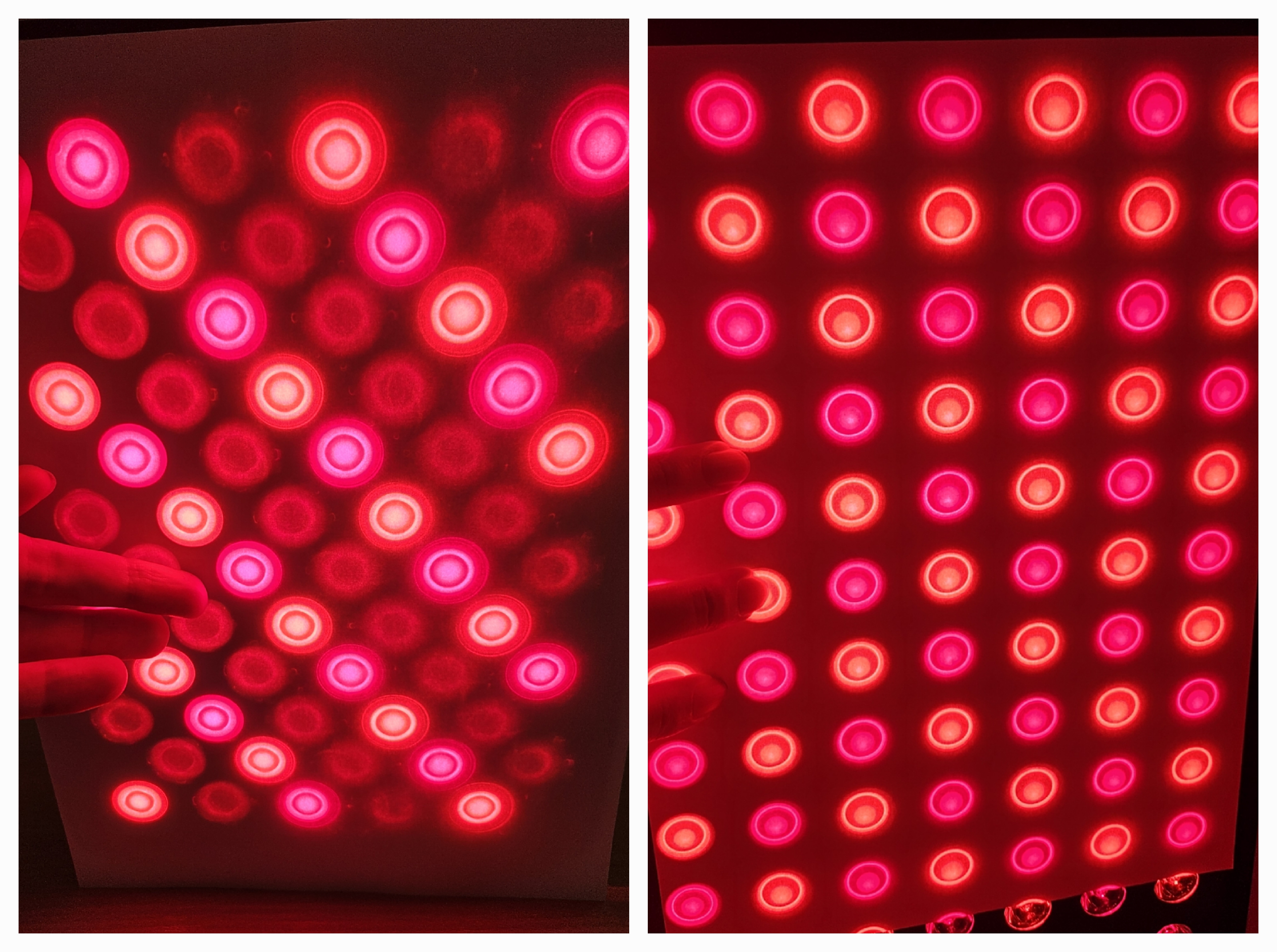
When there are two chips, they cannot be placed at the center, but they are below each other. That can be seen at the right picture, where the inner circle of RED chip is lower (and the NIR chip would be higher, but NIR is disabled as I said earlier). It is also obvious that the chips (and circles) are a bit smaller than with the single-chip variant on the left side.
Note that the dim stripes of LEDs on the left image are NIR. Even though they are disabled, they still show a slight glow which is visible on the paper. If enabled, the NIR light would be captured on camera as purple color instead.
One person said on Reddit that the single-chips should have the intensity distributed evenly thanks to them being centered. But as we can see, there is still the inner circle separate from the outer ring with higher intensity and additional glow around the ring. Note the paper is at 0cm only where my fingers are, and gets more distant - showing larger glow around the outer ring - further away. As I said, it was a quick test :)
I don't think there is any significant difference here, or that the dual-chips should be considered disadvantageous at this distance. (You are normally not supposed to use panels at this distance anyway, but the Reddit comment was about using it directly on the body.)
Distance at 5 cm (2 inches)
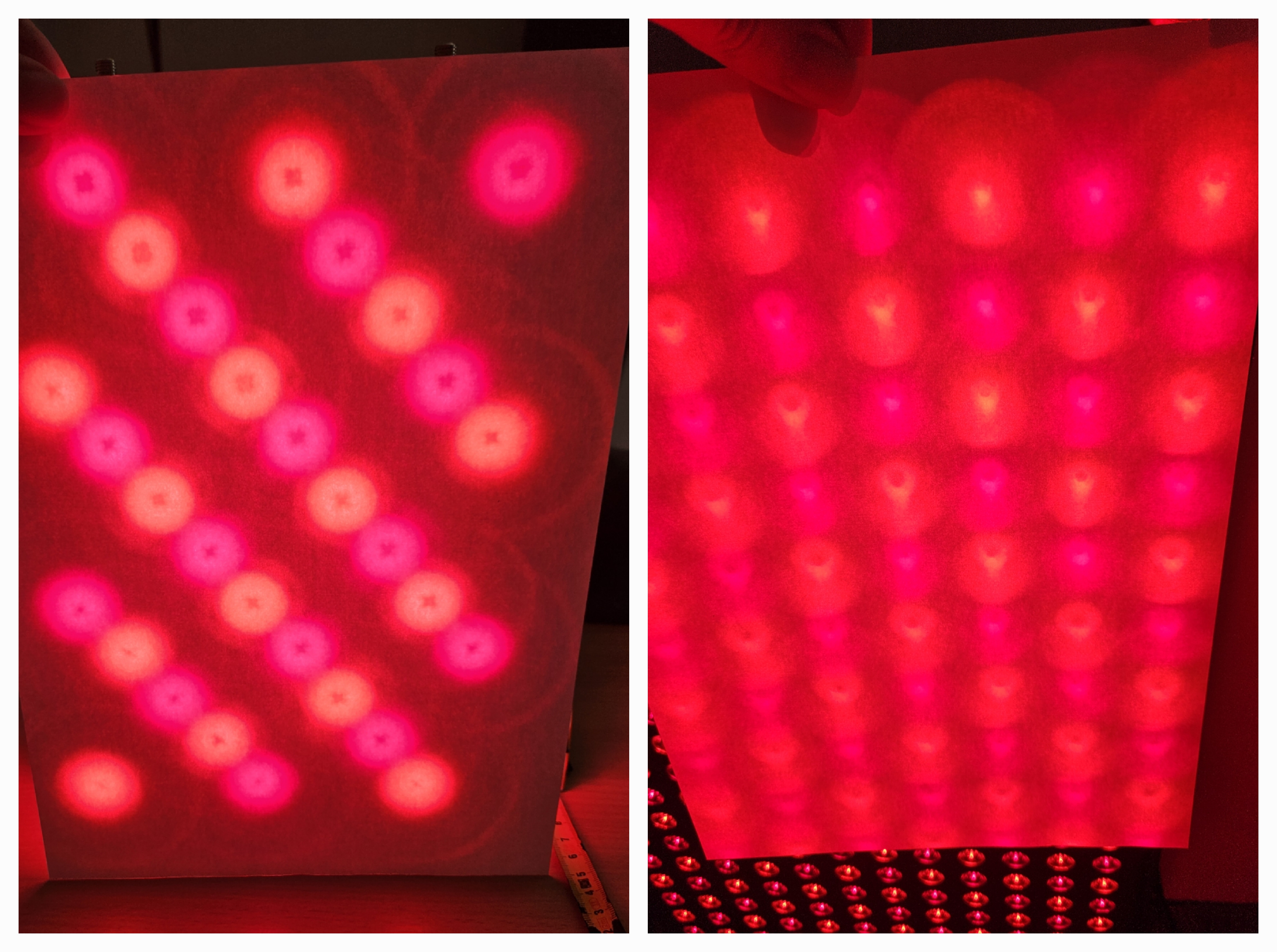
We can see that dual-chips (on right image) already provide advantage here thanks to the fact that each LED bead produces the RED light. There are still some bright spots in the circles. Interesting is that single chips (on left image) produces some darker spots in the center and rest of the circle is more intense (opposite of right image).
Single-chip panel produces these strips of light (the other strip is the disabled NIR), in which the circles starts to touch, but it doesn't even start blending the gap of NIR LEDs.
But again, this distance doesn't really matter as it's not being normally used that close.
Distance at 10 cm (4 inches)
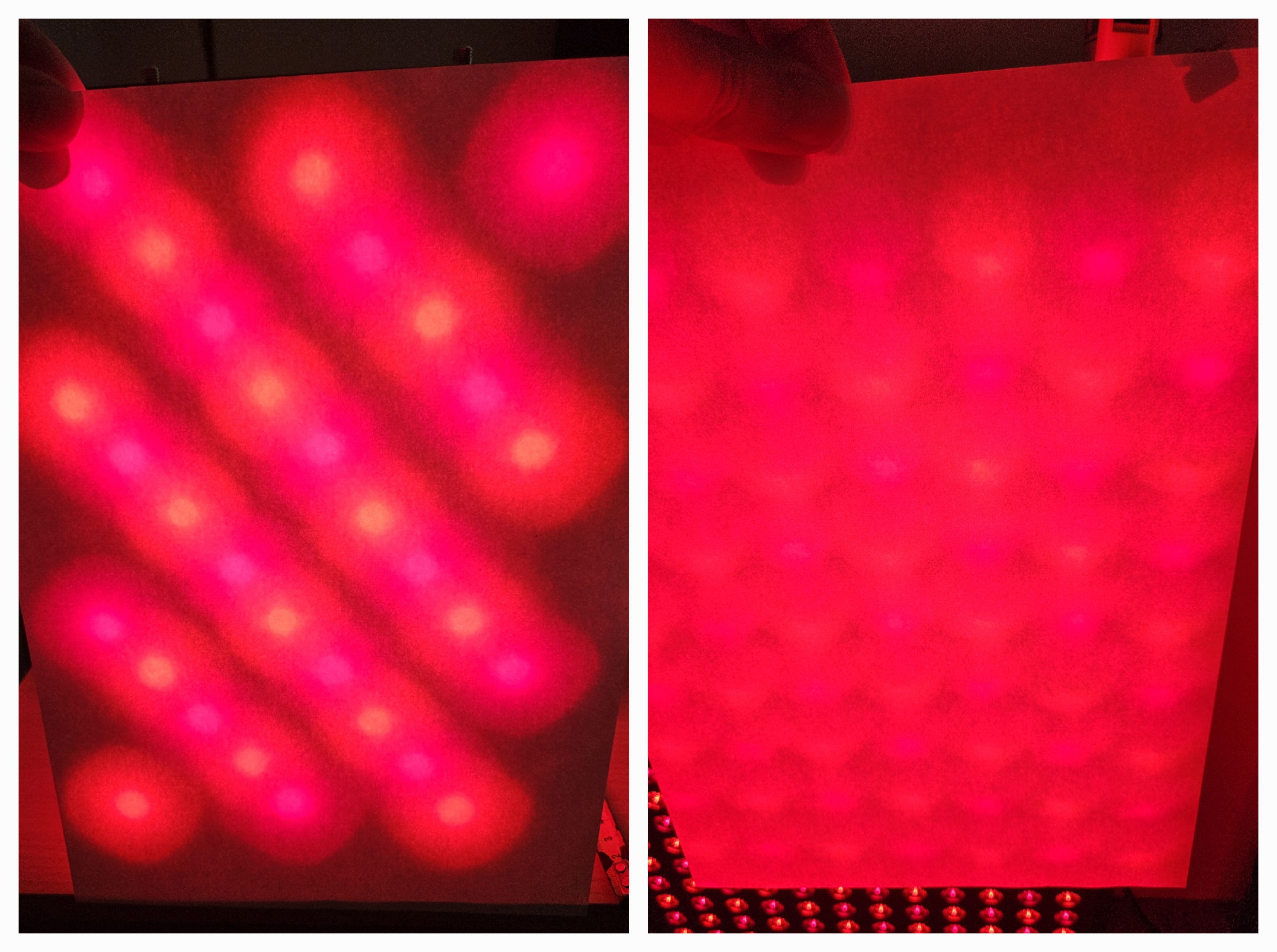
Dual-chip panel (right image) starts to form the nice blend of light. We can still see the circles with some higher intensity dots.
Single-chip panel (left image) still has only stripes of lights which didn't form an even blend, also with more visible spots of high intensity in centers.
Distance at 15 cm (6")
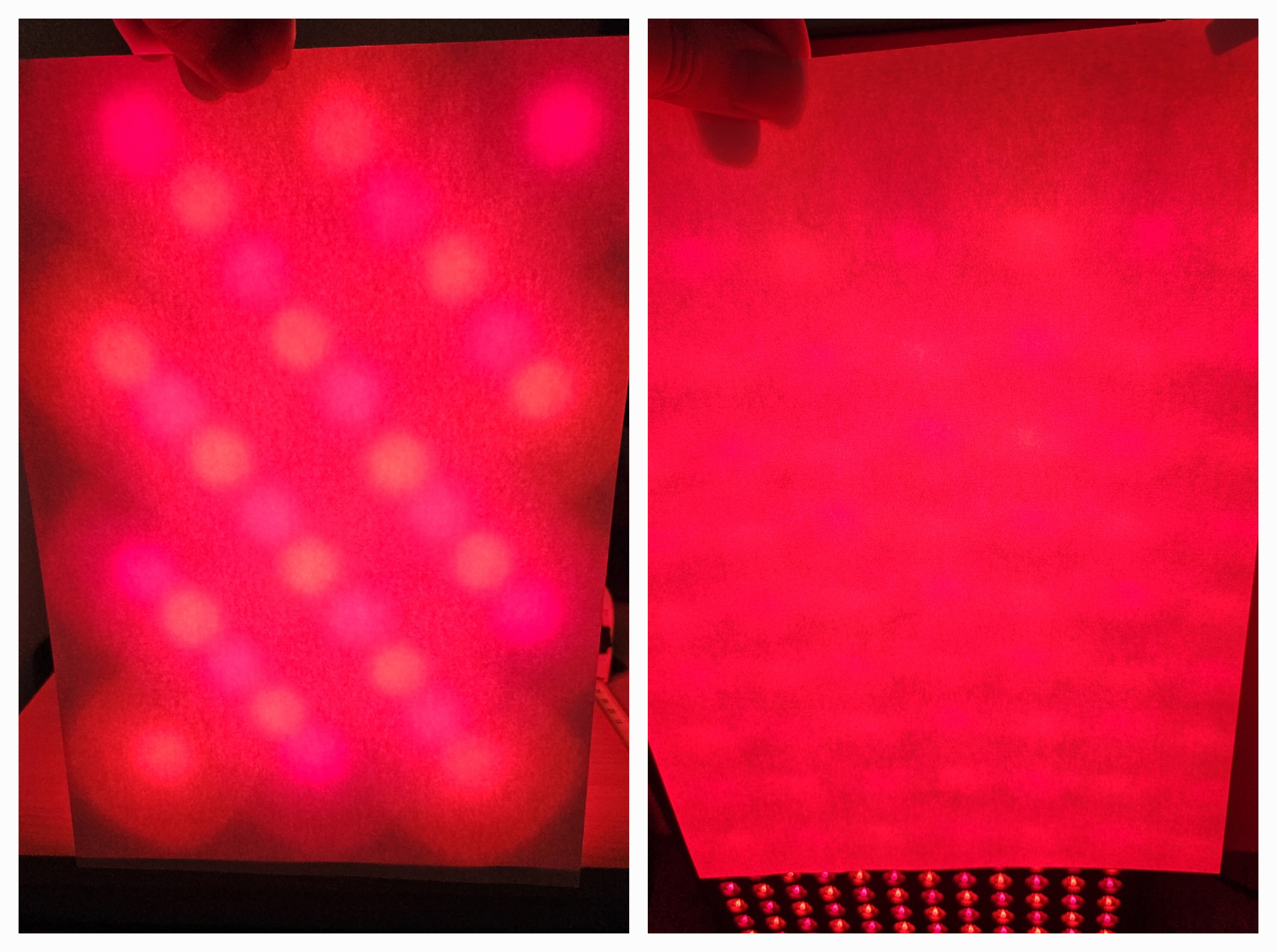
Dual-chip panel (right image) blends even more, but you can still see the circles a bit, but I think this is good distance to use the panel with nice blend of light.
With single-chip panel (left image) there are still too bright spots and visible stripes, but at least at this distance they overlapped the NIR gap.
Distance at 20 cm (8")
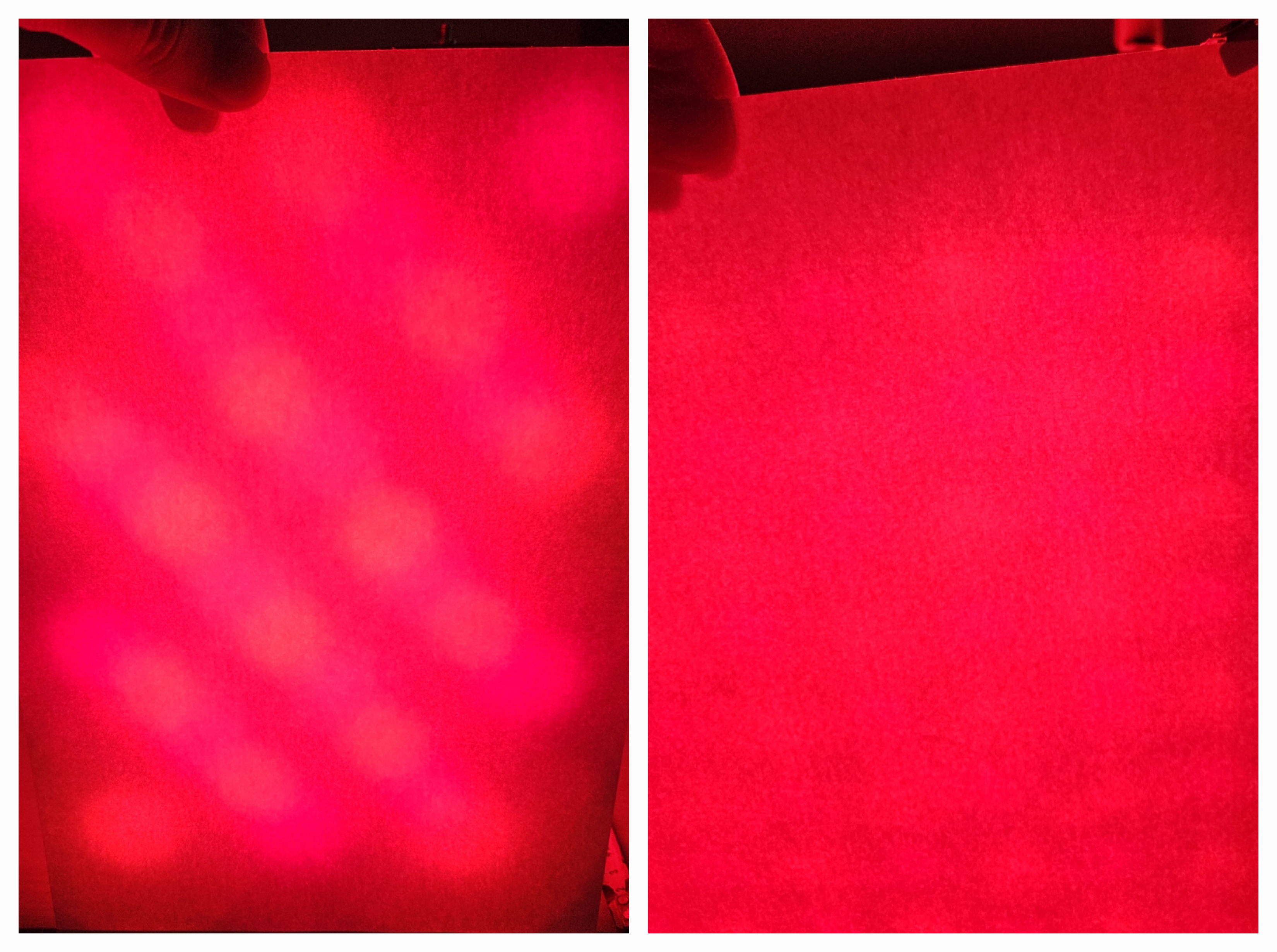
Already great blend for dual-chip (right image), while still visible stripes and bright spots with single-chip (left image).
Distance at 25 cm (10")
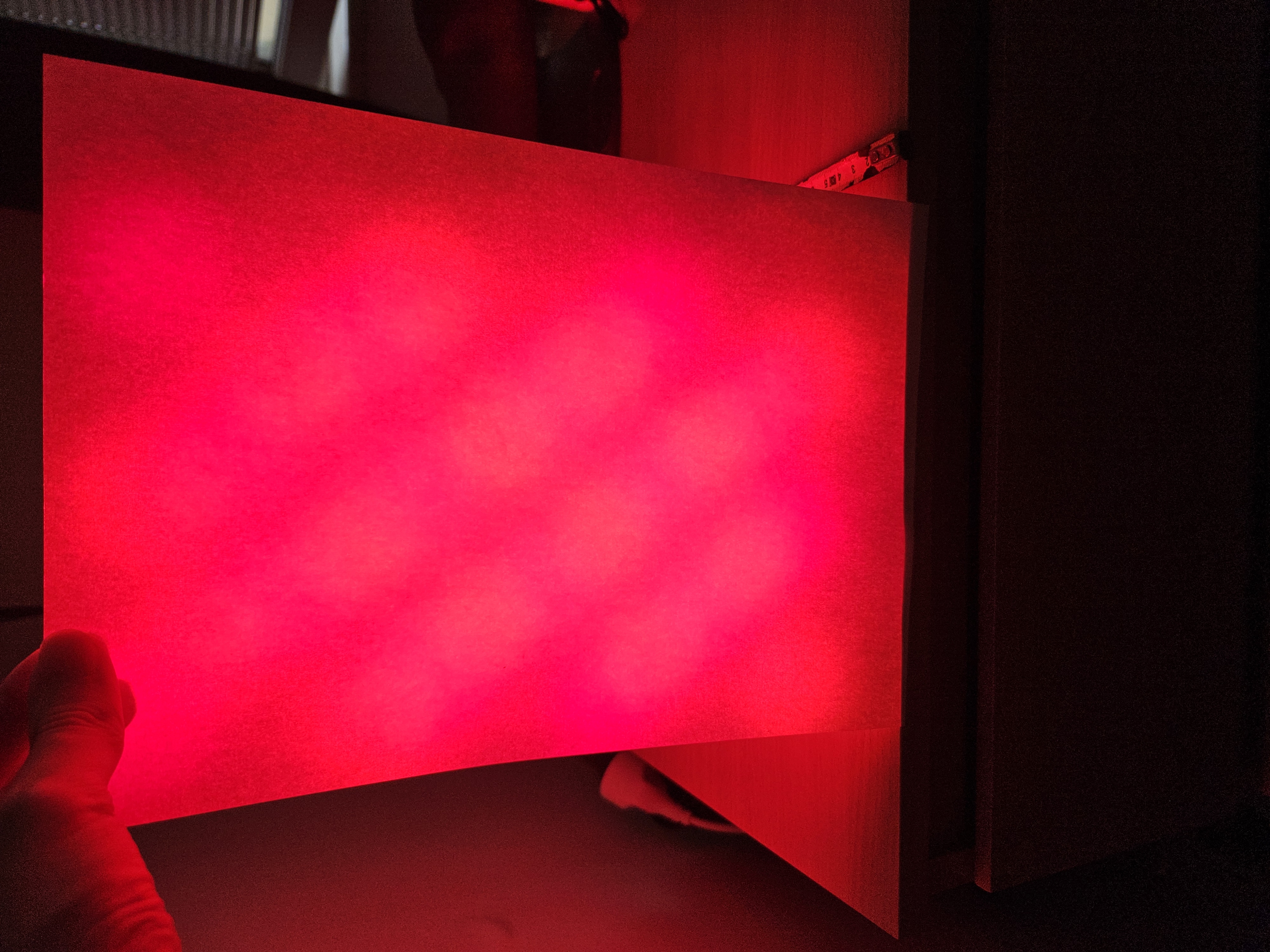
Just for illustration, the single-chip panel only. Now there are no bright spots (the few weird spots is probably camera glitch), but the stripes of missing NIR are still noticeable.
Distance at 30 cm (12")
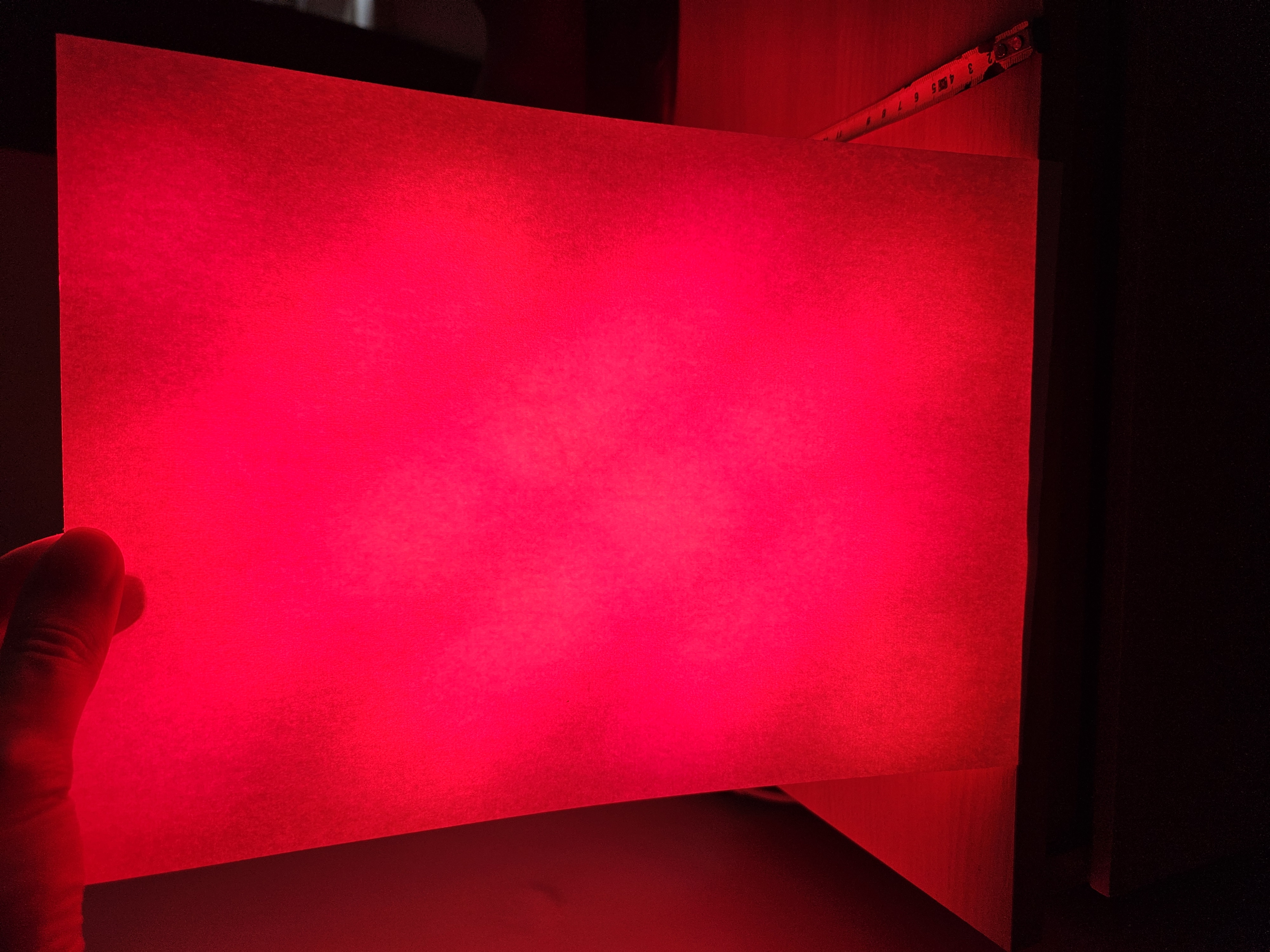
Great blend at this distance, but the missing stripes of NIR are still visible a bit.
Summary
Dual-chip panels provide way better blend of light. Good blend of light is achieved at 15cm (6") for dual-chips, and probably at 25cm (8") for single-chips. This is for 30 degrees lens.